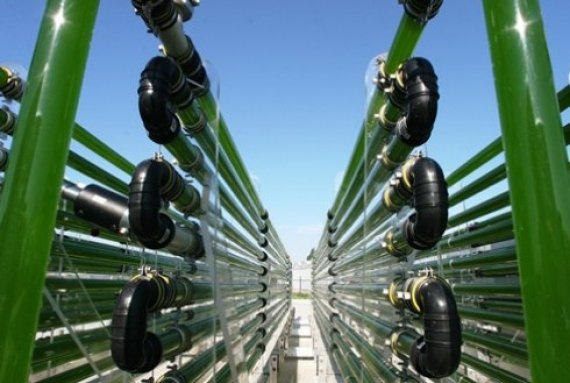<photo: AlgaeParc, onderzoeksfaciliteit van DLO>
DLO needs 83 million euros for the maintenance of existing research facilities and another 9 million for investing in new facilities. DLO allocates budget to this, but the allocation is not sufficient. ‘The exploitation of these research facilities never covers it,’ says manager Petra Caessens of CAT-Agrofood, ‘because not all the running costs of the facilities cannot be charged to research projects.’ How many millions short DLO is, she does not know.
The DLO facilities concerned are the High Containment Unit for research on highly contagious animal diseases in Lelystad, the Dairy Campus in Leeuwarden, the Swine Innovation Centre in Sterksel, Imares laboratories in Ijmuiden and Den Helder, Unifarm greenhouses and trial plots scattered around the Netherlands, and the AlgaeParc and Rikilt laboratories in Wageningen. A few Wageningen University facilities are included in the inventory too: CAT-AgroFood on the campus and the horticulture research units in Bleiswijk. DLO estimates the maintenance costs for these facilities for the next few years at 83 million euros. On top of this, DLO needs a further 9 million euros per year for a new building at the Central Veterinary Institute in Lelystad.
In total, the institutes for applied research – besides DLO these are TNO, Deltares, Marin, ECN and NLR – are short of 166 million euros for the maintenance of existing facilities. The institutes need a further 165 million to build new laboratories for future research. And they shouldn’t wait too long: the institutes say most of the investment needs to take place between now and 2020 if they are to stay competitive.
Among the facilities run by the six institutes are those where researchers test new generations of solar panels or simulate dyke breaches. Such facilities are often funded from the natural gas revenue fund FES, but this funding does not cover maintenance costs. ‘The idea that these large and often unique facilities are profitable is unrealistic,’ says Deltares director Martin Smits. Since the top sector policy was introduced five years ago, the institutes have received less government funding.
According to Bas Wessels, director of Corporate finance & control at Wageningen UR, the research facilities exist in a kind of no man’s land. ‘The government is spending less and less on research facilities, private sector clients only pay the cost of the research, and research funding bodies such as the EU only pay a small proportion of the indirect costs. This means there is no one covering the fixed costs of equipment and facilities anymore.’

